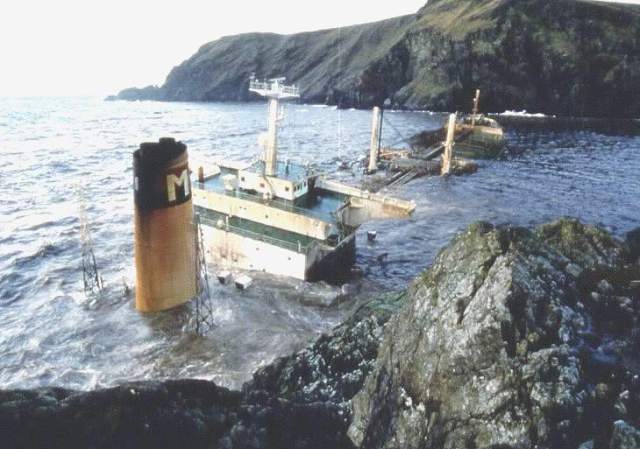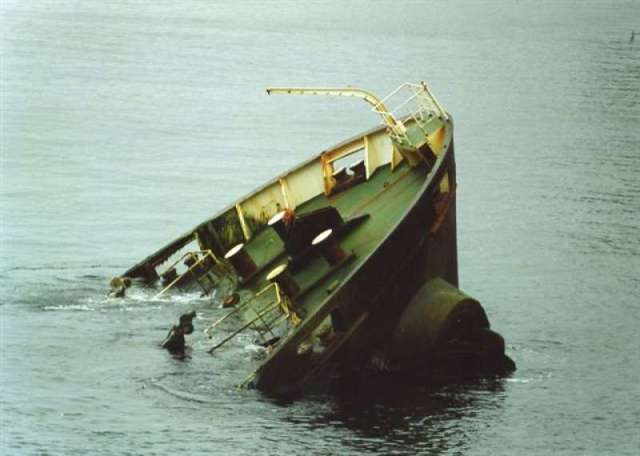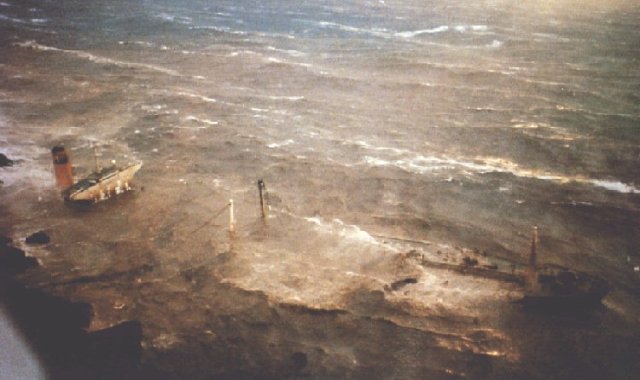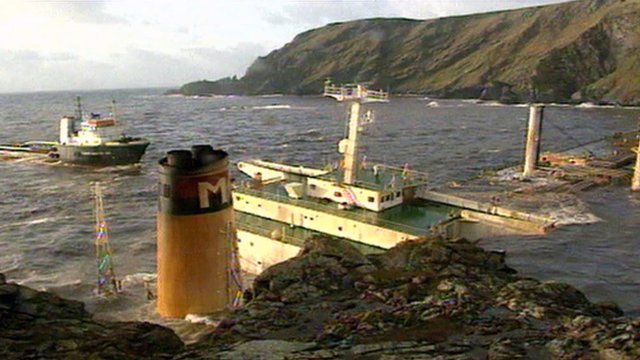MT Braer

On January 5, 1993, the 241 meter long, 87,730 dwt oil tanker Braer ran aground at Garths Ness, Shetland Islands, Scotland. The grounding and loss of the tanker would result in one of the largest oil spills in history.
The Braer loss began with the vessel departing from Mongstad, Norway on January 3, 1993. The tanker was loaded with some 84,700 tons of light crude oil bound for Quebec, Canada. The Braer planned route would pass through the North Fair Isle Strait between the Orkney Islands and the Shetland Islands. The 29 crew were busy getting the vessel ready. There were 5 additional men on the voyage who would carry out routine maintenance and repair work. All on board were expecting a rough voyage, as there were severe southerly gales in the area.
The Braer voyage seem routine the following day. The crew were making routine adjustments when they encountered some problems. The crew had done some minor work with the auxiliary boiler, but were having difficulty re-igniting it. The Braer used the boiler to warm the heavy fuel oil for the main engine. Without it, the heavy fuel oil could not be used to run the main engine. The crew switched the main engine over to diesel fuel while they continued to work on the problem.
Soon after midnight, the watch changed and engineers on board continued to work on the boiler. After checking several different components, the crew discovered seawater contamination in the diesel supply line to the boiler. The crew attempted to drain the water from the line. Additional seawater was later discovered in the diesel fuel line to the main engine and generator. The crew also attempted to drain the water, but around 4:30 am, the main engine stopped with the generator a short time later. The Braer was just 10 miles south of the Shetland Islands and had no power.

The master on the Braer advised the Shetland Coast Guard that his vessel had lost power and was drifting northwards toward the shore. He requested a tug be sent out for assistance. However, it took an additional hour, before the master of the Braer to arrange a tow due to the complexity between the ship manager, underwriters and tugs. After 6 a.m., the Coast Guard advised the tug Star Sirius to go to the assistance of the Braer.

The gale continued to push the Braer closer to the shoreline. By 8:30 a.m., the tanker appeared it would soon drift onto the rocks. A helicopter was dispatched and all personnel were evacuated before 9:00 a.m. with no injuries. The helicopter reported that the Braer seem to be drifting to the northwest and out of immediate danger. By 9:30, the tug Star Sirius arrived on scene but could not secure a line until someone could be placed back on the tanker.
An hour later, a helicopter left Sumburgh with the master of the Braer with 5 other men to be lowered onto the tanker. The men gathered on the poop deck as the Star Sirius fired a line to them. The men were able to pull in the line initially, but the heavy seas were too much and the line was pulled away from their hands. A few minutes later the stern of the Braer struck the rocks off the shore of Garths Ness.

In short order, the Braer’s hull was torn open by the rocks and heavy seas. As the severe gale continued for several days, the Braer broke up into three sections. The entire cargo of 85,000 tons of light crude oil was released. Authorities imposed a fishing exclusion zone around the wreck area while some 45 square kilometers of grassland also had to be excluded. The oil spray from the wreck had been blown inland and some 23,000 sheep had to be removed from the area.

However, the environmental impact was far lighter than predicted. The low viscosity of the light crude and high waves help dispersed the oil. Reports state only 1% of the oil washed up on the beaches, but there was still a large environmental impact. Over 7500 birds died from the spill and large amount of marine life was impacted as well. Some 95 million USD were paid out in claims by those impacted by the spill.